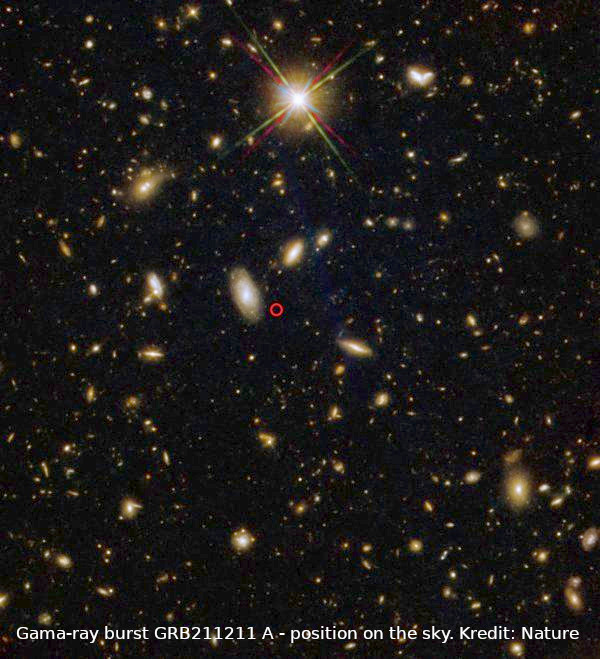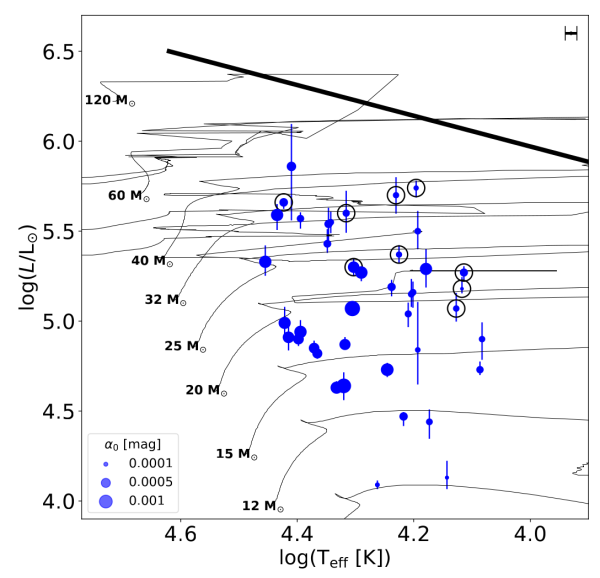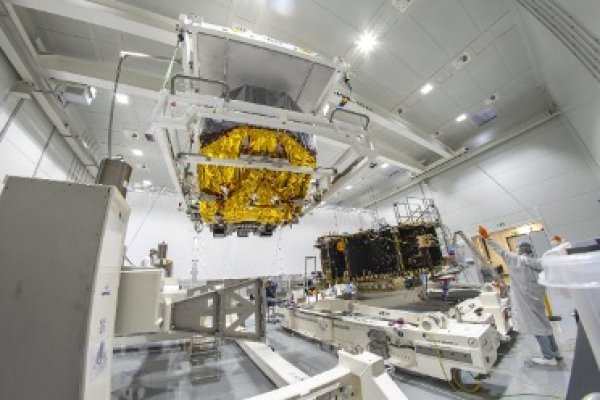A team led by Jilian Rastinejad of Northwestern University in the US studied the unusual gamma-ray burst GRB 211211A with many different ground-based and space-based telescopes. Astronomer Christina Thöne from the Astronomical Institute of the Academy of Sciences of the Czech Republic was also a member of this team, who observed this object for several weeks with the instruments at the Calar Alto Observatory (CAHA) in southern Spain and the 10.4m Gran Telescopio Canarias (GTC) telescope in the Canary Islands. The results are presented in the paper titled „A kilonova following a long-duration gamma-ray burst at 350 Mpc“, by Rastinejad, J. et al., al. (2022) recently published in scientific journal Nature.
Abstract
Gamma-ray bursts (GRBs) are divided into two populations1,2; long GRBs that derive from the core collapse of massive stars and short GRBs that form in the merger of two compact objects4,5. Although it is common to divide the two populations at a gamma-ray duration of 2 s, classification based on duration does not always map to the progenitor. Notably, GRBs with short (≲2 s) spikes of prompt gamma-ray emission followed by prolonged, spectrally softer extended emission (EE-SGRBs) have been suggested to arise from compact object mergers6,7,8. Compact object mergers are of great astrophysical importance as the only confirmed site of rapid neutron capture (r-process) nucleosynthesis, observed in the form of so-called kilonovae9,10,11,12,13,14. Here we report the discovery of a possible kilonova associated with the nearby (350 Mpc), minute-duration GRB 211211A. The kilonova implies that the progenitor is a compact object merger, suggesting that GRBs with long, complex light curves can be spawned from merger events. The kilonova of GRB 211211A has a similar luminosity, duration and colour to that which accompanied the gravitational wave (GW)-detected binary neutron star (BNS) merger GW170817 (ref. 4). Further searches for GW signals coincident with long GRBs are a promising route for future multi-messenger astronomy.
References and contact
- more details in AI Press Release (in Czech, Tisková zpráva ASU)
- 1st Nature paper: Rastinejad, J., Gompertz, B., Levan, A., & Fong, W., et al. (2022). „A kilonova following a long-duration gamma-ray burst at 350 Mpc“. DOI: 10.1038/s41586-022-05390-w
- 2nd Nature paper: Troja, E., Fryer, C.L., O’Connor, B., & Ryan, G., et al (2022). „A nearby long gamma-ray burst from a merger of compact objects“. DOI: 10.1038/s41586-022-05327-3
- contact: Dr. Martin Jelínek – Stellar department, head of High Energy Astrophysics working group (Czech, English); martin.jelinek@asu.cas.cz
- contact: Christina Thöne – Astronomical Institute of AS CR (German, English); cthoene@asu.cas.cz



